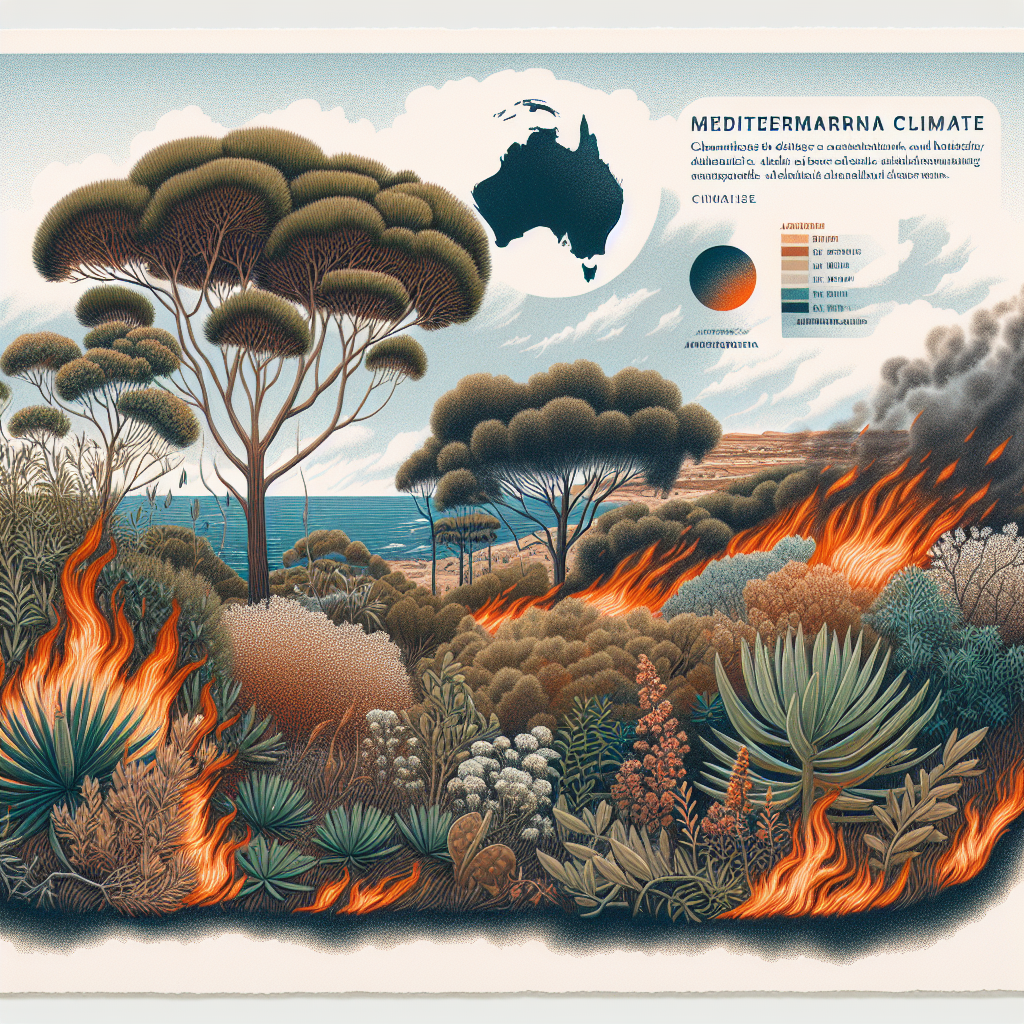Australia’s unique climate has always been a double-edged sword. Renowned for its diversity, beauty, and extremes, the nation’s Mediterranean-like weather patterns in certain regions are now exacerbating a growing menace: bushfires. Recent data and expert analysis reveal that rising temperatures, drier conditions, and shifting climate patterns are intensifying the frequency and brutality of bushfires, posing a mounting threat to ecosystems, farmland, and human communities. In this comprehensive piece, we’ll explore how Australia’s Mediterranean climate factors into bushfire risks, the underlying causes, and potential mitigation strategies.
Understanding the Role of the Mediterranean Climate
The Mediterranean climate is most commonly associated with regions like southern Europe, California, and parts of Australia, particularly around southern and southwestern areas. This climate typically involves:
- Hot, dry summers
- Mild, wet winters
- A transition between these seasons that often brings dry winds
While these conditions are favorable for agriculture and tourism, they also create an ideal recipe for bushfires. Prolonged periods of heat lead to drier vegetation, which acts as fuel. Add in winds and lightning strikes during summer storms, and the stage is set for fires to spread rapidly.
Why Bushfire Risks Are Increasing
The relationship between Australia’s climate and bushfires isn’t new, but it is growing more dangerous for several reasons:
1. The Impact of Climate Change
Global climate change has been labeled a key driver of intensified bushfire risks, especially under the Mediterranean weather model. Rising temperatures across Australia have shortened the rainfall window during winters and extended dry seasons. According to recent climate reports:
- Australia’s average temperature has risen by approximately 1.47°C since 1910.
- Rainfall deficiencies in southern and eastern Australia are becoming more severe.
These changes continue to reduce the moisture levels of soil and vegetation, turning forests and grasslands into fire-prone areas.
2. More Frequent Climate Events
In addition to broad trends, isolated extreme weather events are growing in frequency. Heatwaves are lasting longer, while periods of high winds are becoming more common. Extreme events, such as El Niño and La Niña, are amplifying the variability in weather, bringing about alternating periods of severe droughts and unique rainfall challenges.
3. Urban Expansion Near Bushfire Zones
Population growth and urban expansion into suburban and rural areas have compounded the issue. More settlements are now located near bushlands, increasing the risk of human-initiated fires and the potential for property and life-threatening damage. Additionally, firefighting systems and evacuation plans need substantial scaling up to protect these growing communities.
Devastating Consequences of Bushfires
The ramifications of escalating bushfire activity are far-reaching, impacting a range of sectors and ecosystems:
Environmental Impact
Bushfires are capable of destroying entire ecosystems. From soil erosion to wildlife displacement, these fires can set back environmental progress by decades. Here’s how:
- Carbon Emissions: Bushfires contribute significantly to global CO2 emissions, feeding into the larger climate crisis.
- Biodiversity Loss: Many native species, particularly in Australia, struggle to recover after repeated large-scale fires.
Economic Costs
Australian governments and communities bear immense economic burdens due to bushfires. From property damages to lost agricultural productivity, fires leave a lasting toll on the economy. In the 2019–2020 bushfire season alone, direct damages exceeded A$10 billion.
Human Health and Well-Being
The growing fire seasons are taking a toll on mental and physical health. Air pollution from smoke exacerbates respiratory illnesses, while the trauma of evacuations and lost homes often leaves lasting emotional scars. The need for mental health services spikes during and after fire seasons.
Mitigation: Fighting the Flames Before They Begin
While it might seem that the forces of a Mediterranean climate and global climate change are beyond our control, there are key strategies that can help mitigate the growing risks of bushfires in Australia.
Improved Fire Management Practices
- Planned Burns: Conducting controlled burns during cooler months to reduce excess vegetation.
- Enhanced Firebreaks: Creating physical barriers to slow or stop the spread of fires.
- Using Technology: Implementing AI and GIS-based systems to predict fire behavior and track ignition spots faster.
Climate Action and Policy Reforms
Tackling the root causes of climate change requires decisive action. Australia must set aggressive targets for carbon emission reductions and promote renewable energy adoption to mitigate its Mediterranean climate trends. Another crucial aspect will be enacting policies focused on land use, ensuring developments aren’t placed within high-risk zones.
Supporting Ecosystem Recovery
Protecting wildlife habitats and helping ecosystems recover should be a proactive effort. The replanting of native vegetation and creation of wildlife corridors can help re-establish damaged ecological systems.
Community Education and Resilience
Equipping people with knowledge is one of the most powerful tools to minimize bushfire risks. Community education programs focusing on evacuation strategies, bushfire survival plans, and property preparations should be enhanced. Programs like “Fire Ready” campaigns serve as valuable resources to help individuals and families stay prepared.
Conclusion
Australia faces a formidable challenge as its Mediterranean climate continues to fuel escalating bushfire risks. While climate change remains a critical factor, a coordinated effort involving government policies, sustainable practices, and community engagement can help mitigate the severity of future bushfire seasons. By addressing the problem today, Australia can lessen the environmental, economic, and human toll that comes with unchecked wildfires.
As the saying goes, “prevention is better than cure.” With proper planning, climate action, and improved risk management, Australia can build resilience against this growing natural threat while safeguarding its iconic landscape and unique biodiversity.
“`


